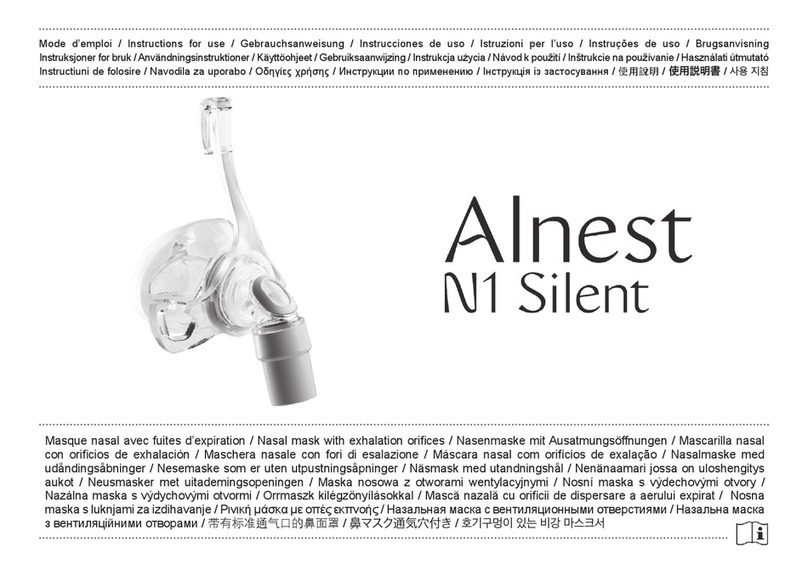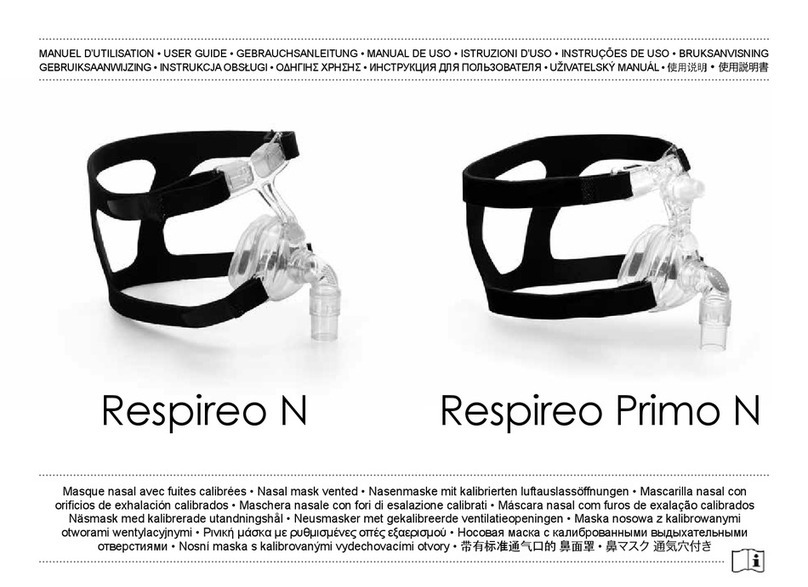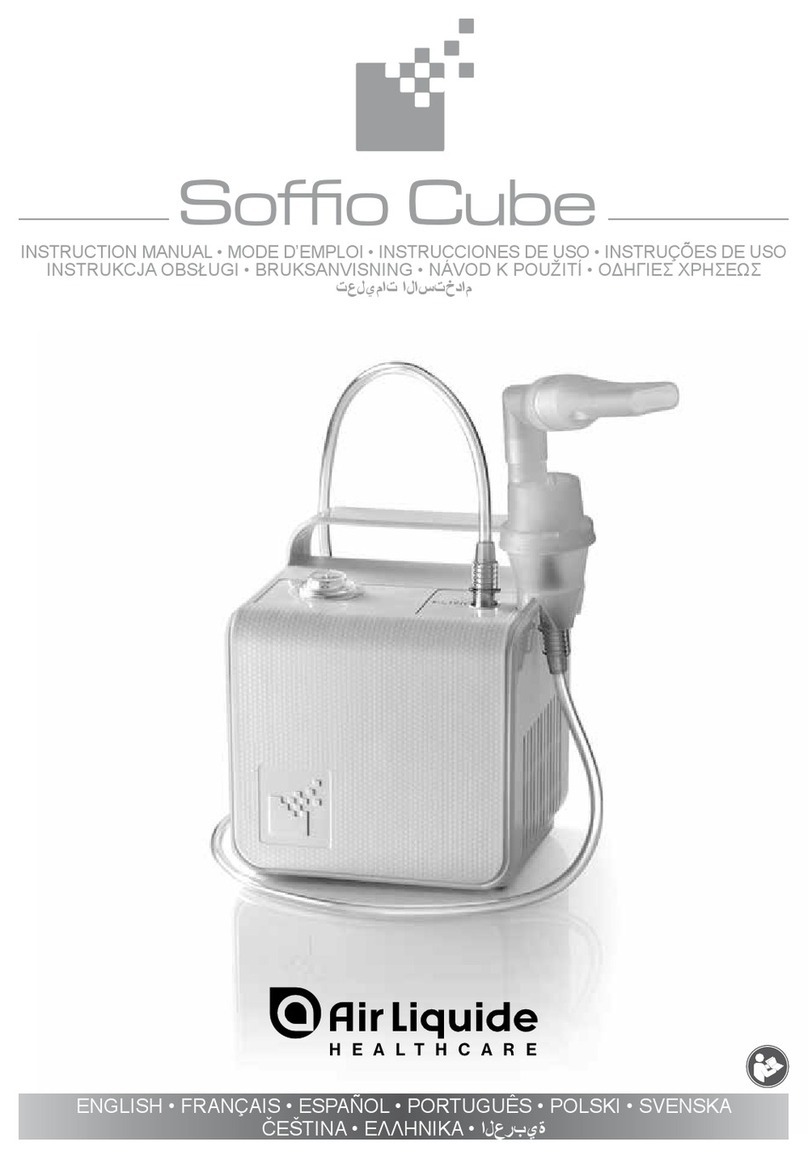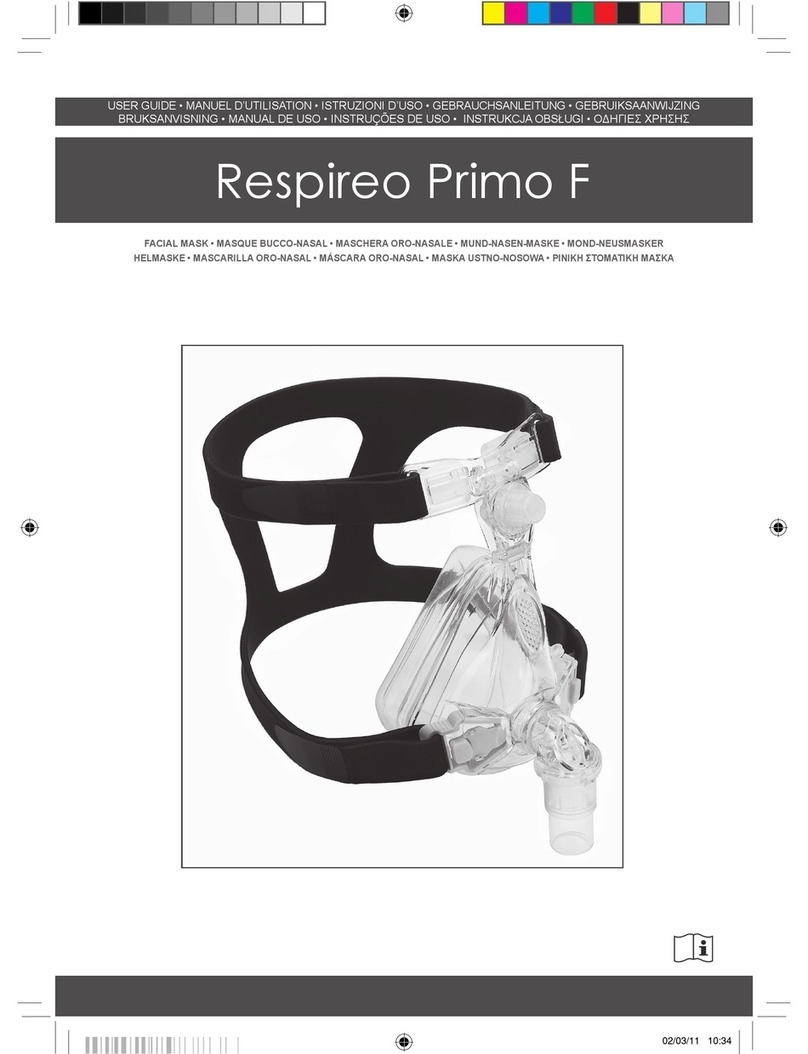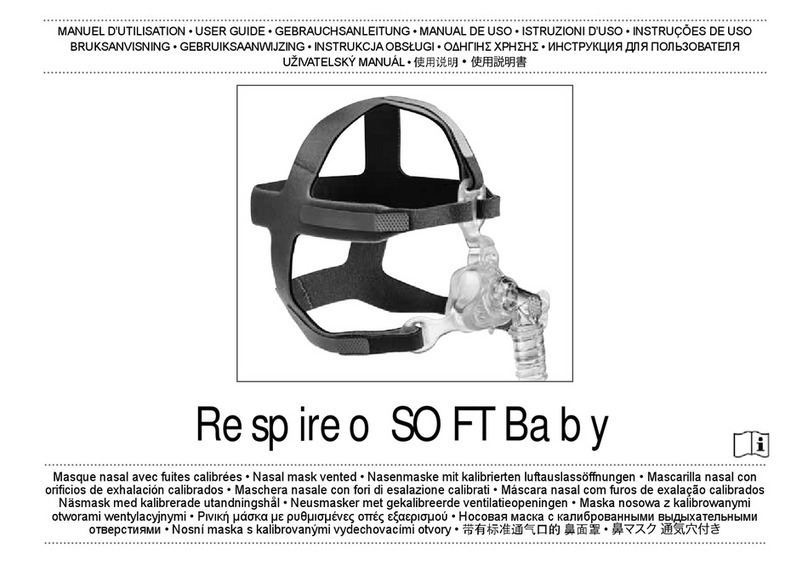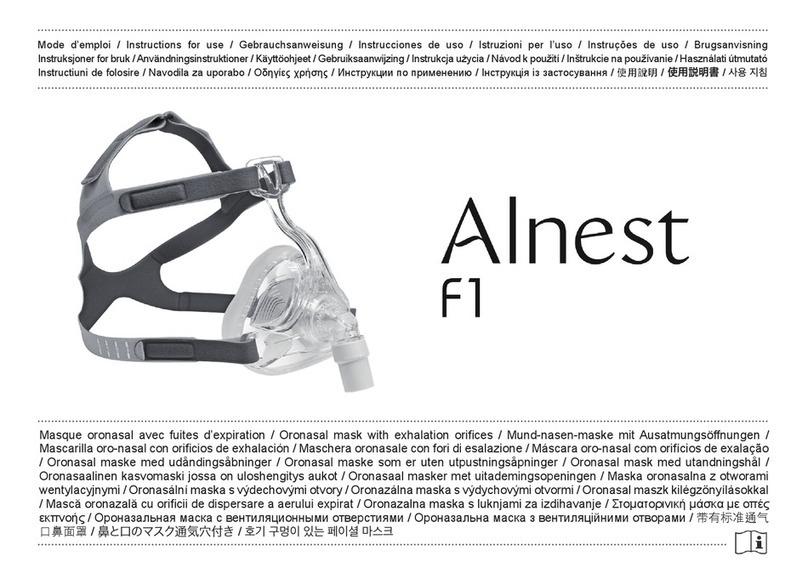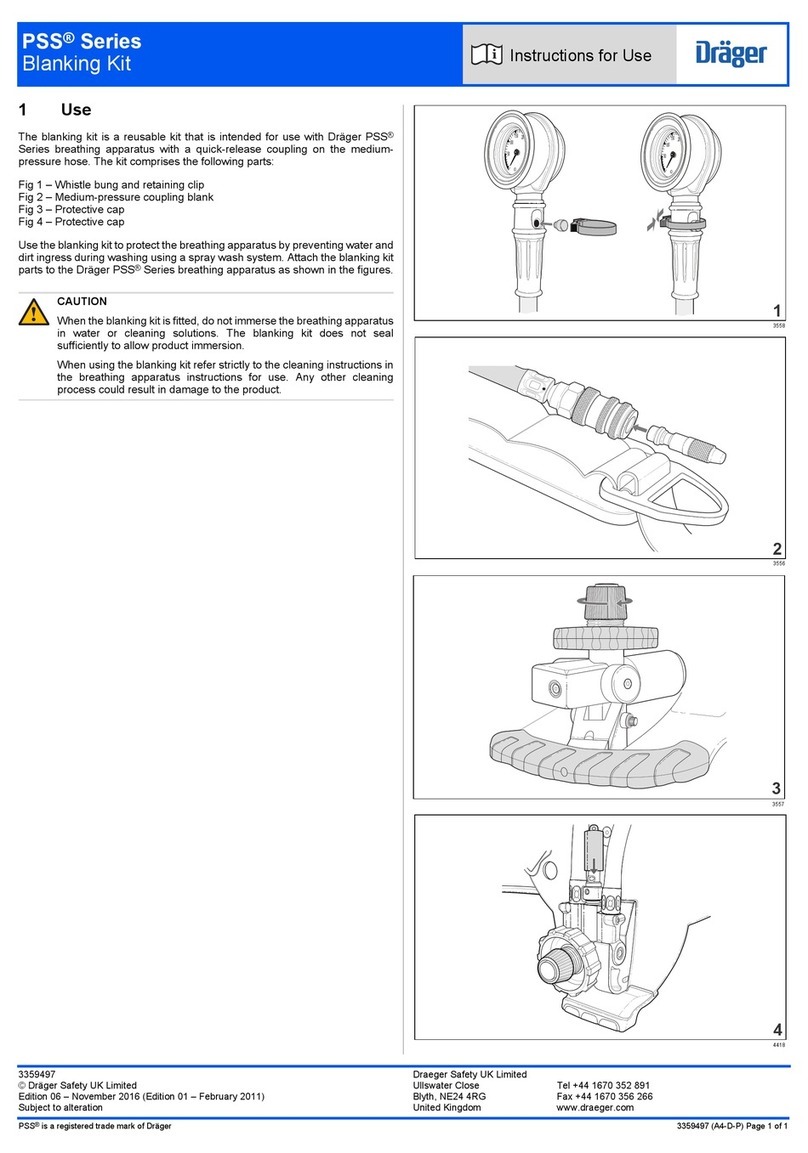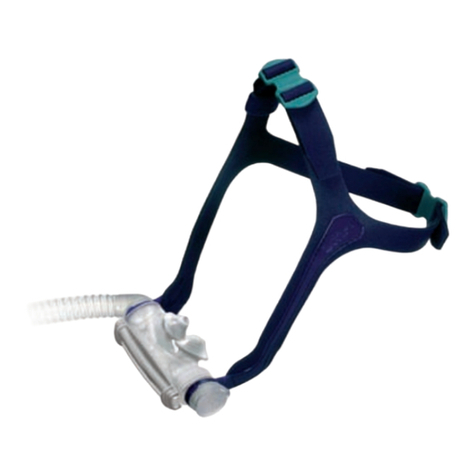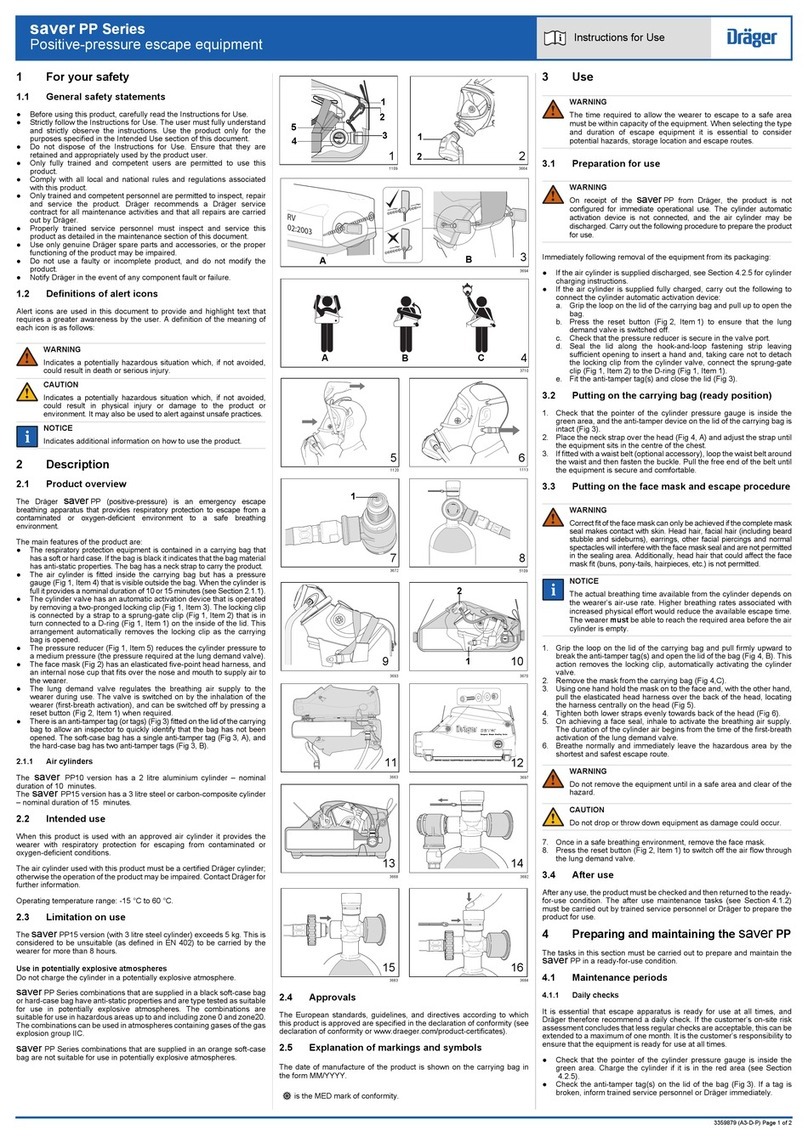
ITALIANO • ITALIANO • ITALIANO • ITALIANO • ITALIANO
• ITALIANO • ITALIANO • ITALIANO • ITALIAN
- collegare il terminale inferiore dell’ampolla al tubetto e collegare l’altra estremità
del tubetto alla presa d’aria dell’apparecchio aerosol di alimentazione
- mettere in funzione l’apparecchio
- durante il trattamento l’ampolla va tenuta in mano in posizione verticale, per
consentirne un corretto funzionamento
- se le operazioni descritte in precedenza sono state effettuate correttamente,
dalla maschera/ boccaglio uscirà il liquido nebulizzato.
La maschera buccale volumetrica (8) deve essere appoggiata delicatamente
al profilo della bocca, mentre il naso deve appoggiare sulla parte esterna della
maschera. Il boccaglio, invece, (7) deve essere inserito tra le labbra: per l’efficacia
della terapia è necessario che l’utilizzatore inspiri con la bocca ed espiri col
naso. Nel caso l’utilizzatore espiri con la bocca la valvola (6) posta sul coperchio
consente l’uscita dell’aria espirata (Fig. D).
La maschera pediatrica (9) deve essere appoggiata delicatamente sul viso del
paziente in modo da coprire sia il naso che la bocca.
Durante l’utilizzo non ostruire la valvola (Fig. D).
Qualora il farmaco contenuto nell’ampolla fosse esaurito o si volesse
interrompere momentaneamente il trattamento, spegnere l’apparecchio aerosol
di alimentazione o chiudere l’erogazione dell’aria. Al termine della terapia una
piccola quantità di liquido può rimanere all’interno dell’ampolla; questo non
pregiudica il trattamento.
3 - PULIZIA, DISINFEZIONE E STERILIZZAZIONE
Per eseguire tali operazioni assicurarsi che il cavo elettrico di alimentazione
non sia collegato all’impianto elettrico e che l’ampolla Alvea e il tubetto non
siano connessi all’apparecchio.
Se fosse necessario pulire, disinfettare o sterilizzare il presente dispositivo medico
con metodologie alternative a quelle indicate a seguire nel capitolo, verificarne la
possibilità consultando la scheda tecnica reperibile presso il fabbricante.
Per evitare rischi di contaminazione microbica Alvea deve essere pulita, disinfettata
e, se necessario, sterilizzata dopo ogni trattamento e prima dell’uso seguendo
attentamente le istruzioni. Prima di essere puliti, disinfettati o sterilizzati, i componenti
devono essere smontati secondo quanto indicato:
- staccare il tubetto
- staccare la maschera o il boccaglio (7, 8 o 9) dall’ampolla (1, 3, 4)

